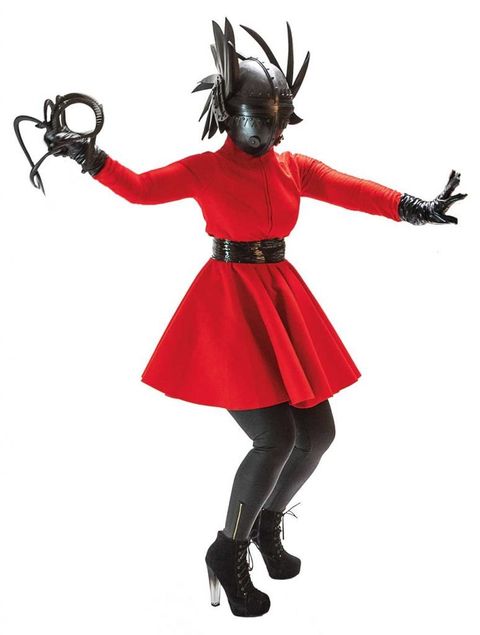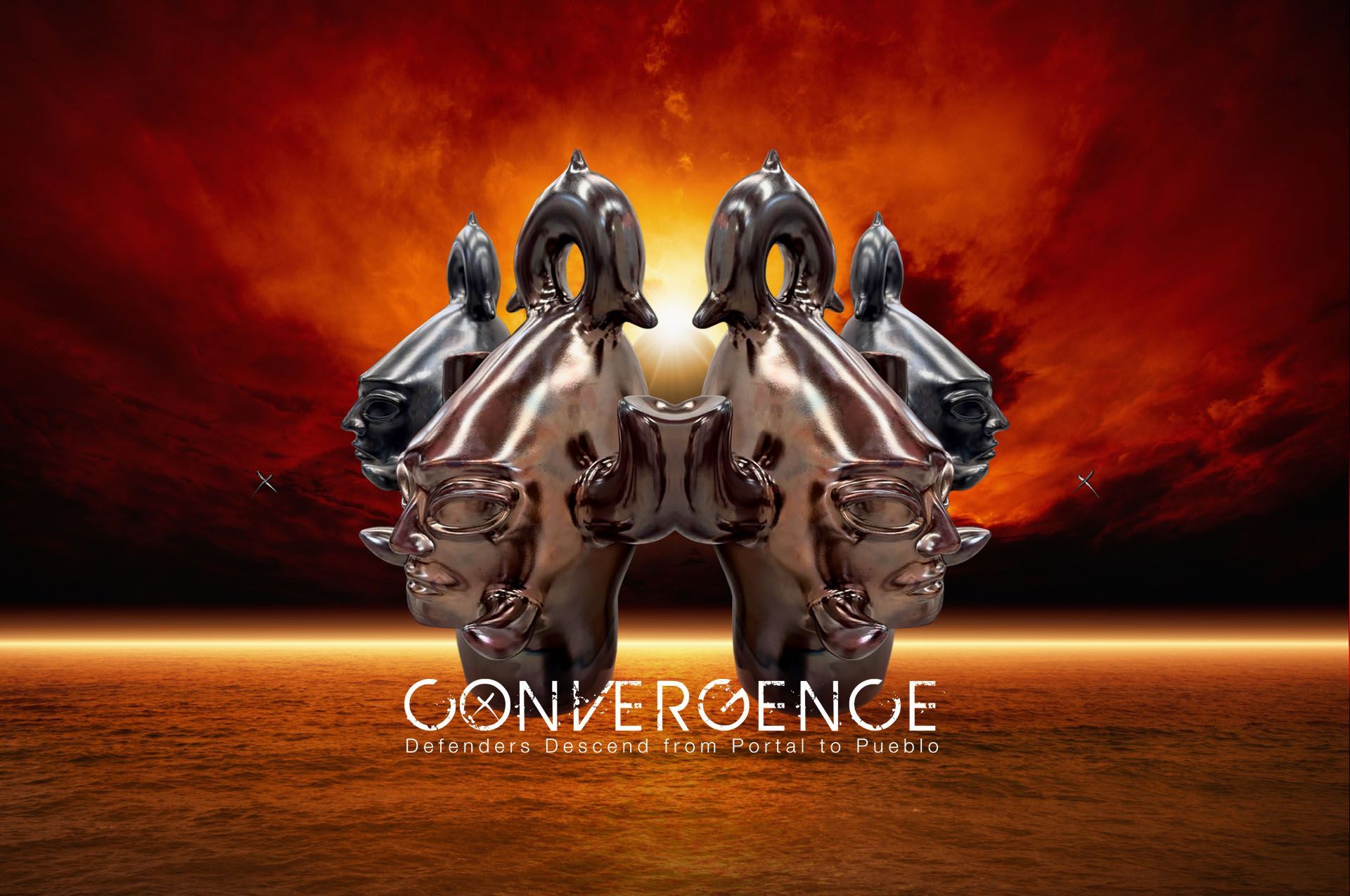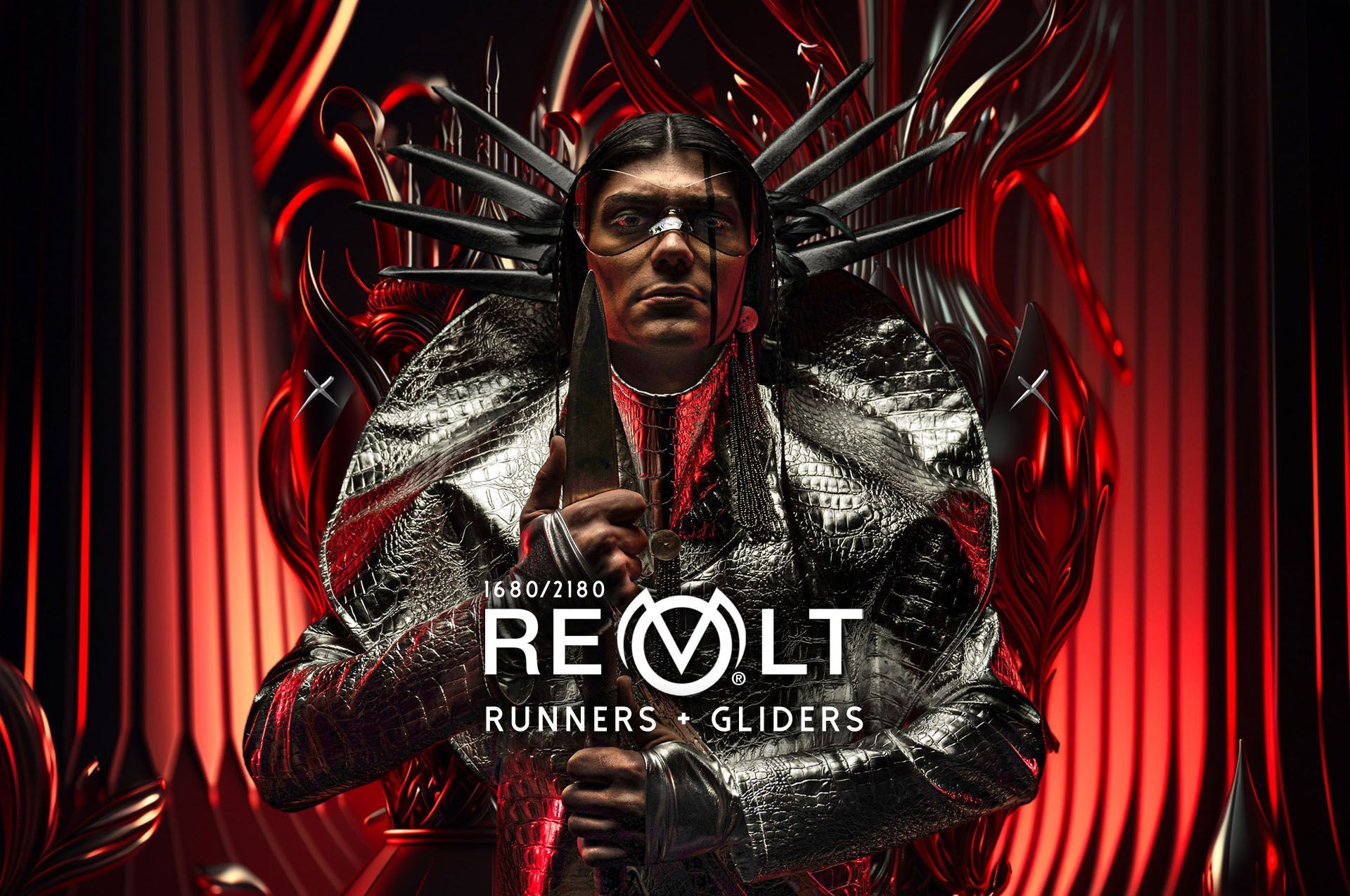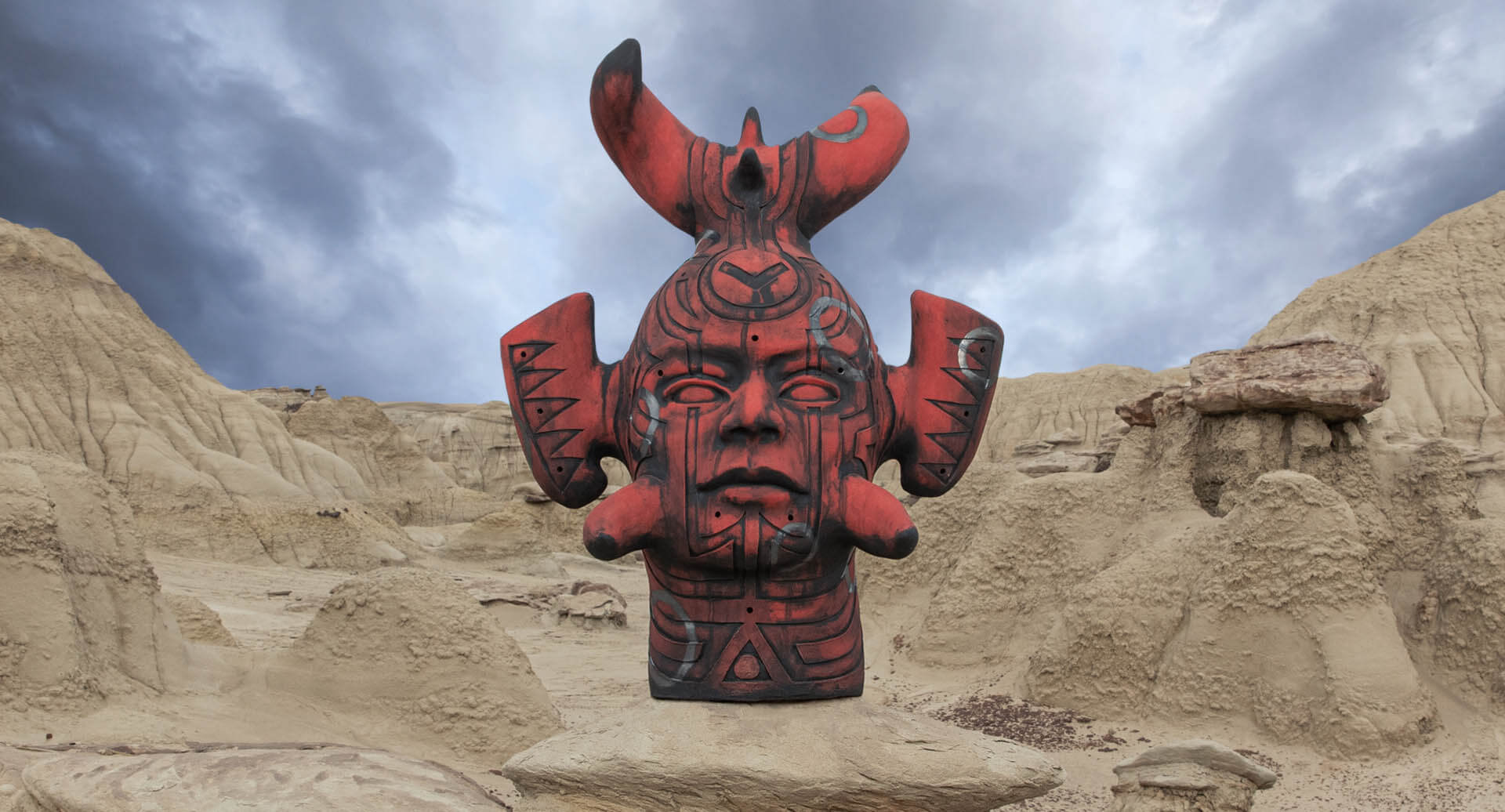
Visualize a figure covered entirely in a metallic sheen, sporting black patent leather combat boots, and a chrome morion helmet, like some portentous apocalyptic avatar, fends off invisible enemies with a large sword. It’s a modern-day depiction of the 1680 Pueblo Revolt as imagined by its groundbreaking creator: Virgil Ortiz.
In a large studio on the historic Cochiti Pueblo, about 45 minutes west of Santa Fe, New Mexico, a figure covered entirely in metallic sheen, sporting black patent leather combat boots and a chrome morion helmet, like some portentous apocalyptic avatar, fends off invisible enemies with a large sword. It’s a modern-day depiction of the 1680 Pueblo Revolt as imagined by its groundbreaking creator: Native American artist, potter, fashion designer and photographer Virgil Ortiz.
Also referred to as the first American Revolution, the revolt was an uprising of indigenous people against Spanish colonizers in the areas surrounding Santa Fe. According to Ortiz, it isn’t taught in American schools nor can it be found in history books. “My mission of nearly two decades has been to create a narrative of the revolt utilizing the various mediums in which I work,” he explains. “I want to make it interesting and relevant to the next generation. I want them to understand our history, how we survived genocide, and how our ancestors kept our art, traditions and ceremonies intact.”
Charles King, owner of King Galleries in Scottsdale and Santa Fe, has represented Ortiz’s work for more than 20 years and co-authored a book on the artist. “In the art world, terms like ‘innovator’ are used so often that they can seem meaningless,” says King. “Yes, Virgil is a creative innovator, but a better term might be that he is a ‘transformative artist.’ He has changed expectations of Native art in clay through his use of form and design. He broke barriers for Native artists to work successfully in multiple mediums at the same time. He is fearless in using the clay to express his own story and create provocative social commentaries on the world around him. In short, he has transformed native clay into something more tangible and more thoughtful.”
Though quiet and unassuming, Ortiz is known for making bold artistic statements that often contrast traditional Pueblo elements with contemporary, even futuristic designs. Considered one of the most innovative potters of his time, the artist has had his work exhibited in museum collections around the world, from the Smithsonian Institution’s National Museum of the American Indian to the Stedelijk Museum ’s-Hertogenbosch in The Netherlands and the Fondation Cartier pour l’art Contemporain in Paris, France, among others.
The youngest of six children who grew up on the Pueblo, Ortiz recalls a childhood in which storytelling, collecting clay, gathering wild plants and producing pottery were part of everyday life. His grandmother Laurencita Herrera and his mother Seferina Ortiz were renowned Pueblo potters who taught him the craft.
“I was born into a family of artists,” says Ortiz. “My grandmother and mother worked with clay, and my dad made drums on a daily basis. Being inspired by my family, I picked up their work ethics and created my own approach.
They never forced me; they only encouraged me. It is with their support that I was able to develop my own signature style and storytelling with my art.”
In 2002, Ortiz was invited to work with fashion design icon Donna Karan. “Being mentored by Donna was an incredible opportunity,” he says. “I was able to see first-hand the entire process from conceptual ideas, sketches, design, cut and sew, fittings, runway, showroom presentation, marketing and sales. It was this experience that inspired and motivated me to create my own clothing line.”
Over the years, Ortiz experimented in different mediums, and began combining pottery, fashion, video and film. His studio, situated adjacent to his childhood home, is a telling repository of his various artistic pursuits. Clay pots share space with racks of garments, while large, shiny mannequins showcase his evolution from pottery to fashion design. A bright room is used as a photography and video workspace.
“The geometric and traditional Cochiti pottery images are bold yet simple and present the perfect combination for fabric design and textiles,” says Ortiz, who began incorporating them into his fashion work.
Embracing imagery that combines apocalyptic themes, science fiction and historic Pueblo culture, Ortiz produces laser-cut leather jackets, taffeta skirts, cashmere sweaters and silk scarves. Each piece is branded with his “signature”—an elegant, stylized turkey-track X.

Contact Us
Success! Thanks so much for joining! We'll periodically send you updates.
Oops, there was an error in signing up. Make sure your email is typed correctly, try again, and contact us if the issue persists.
-
Button
SHOP COLLECTION VI
All Rights Reserved | Virgil Ortiz Creations, LLC | Made in Native America ®












